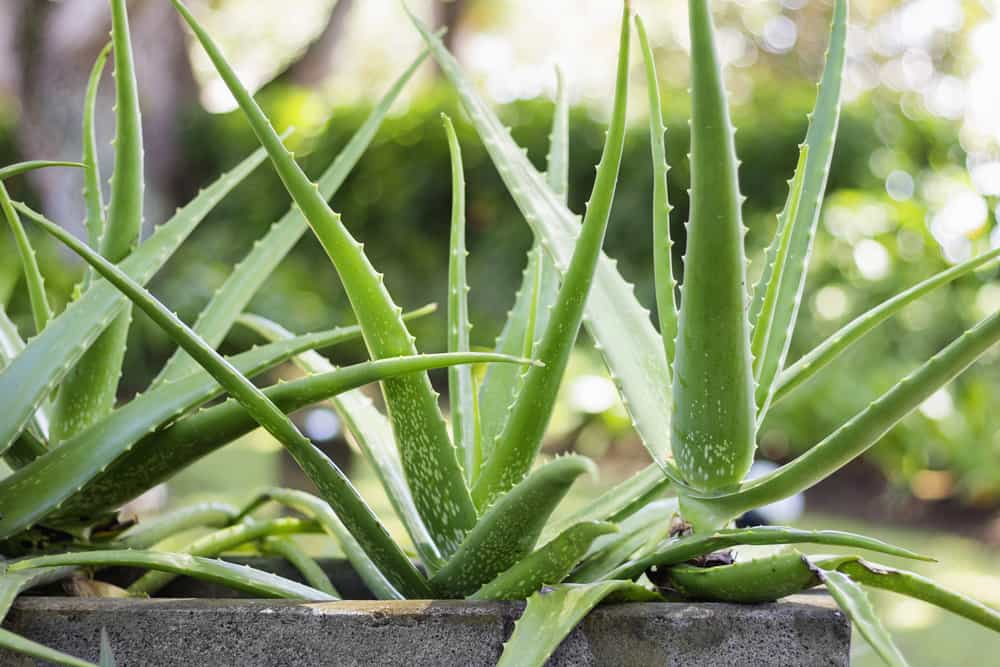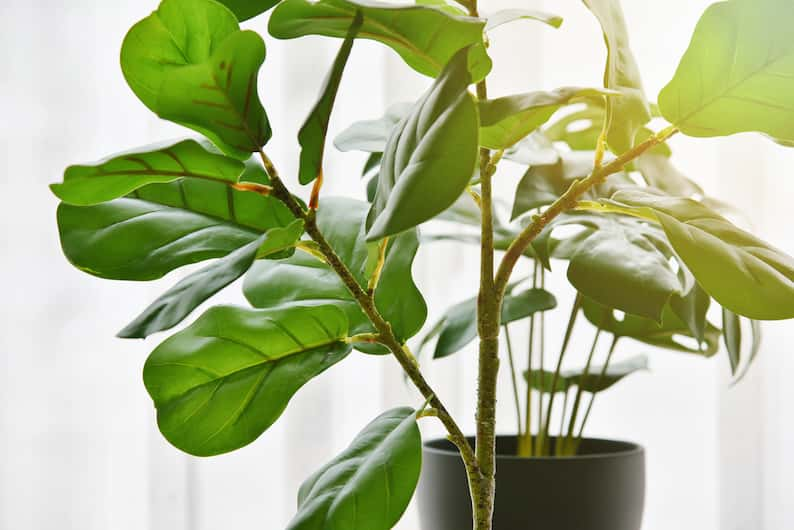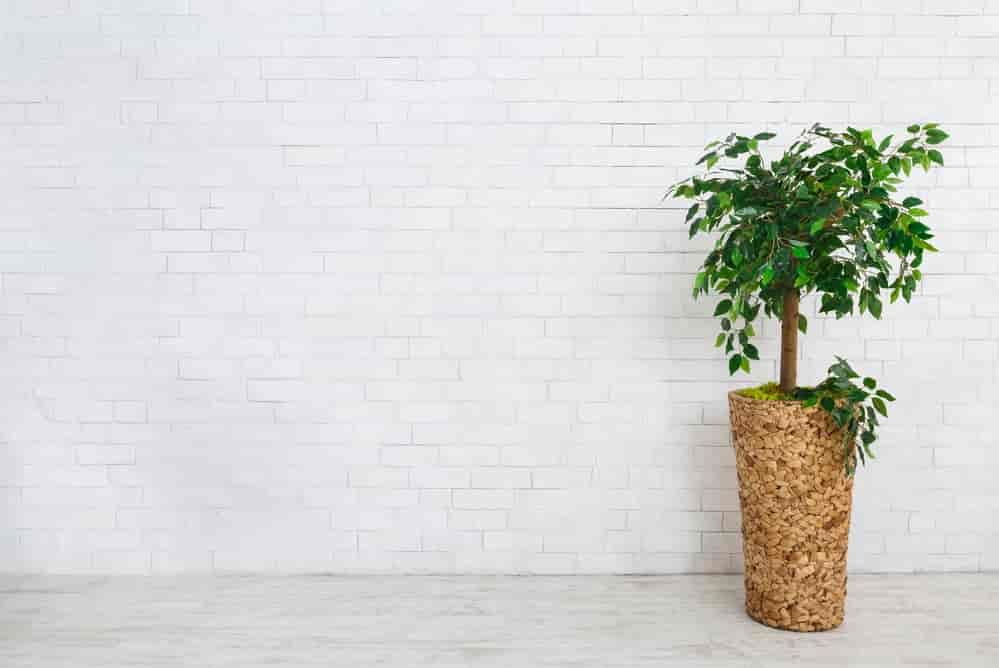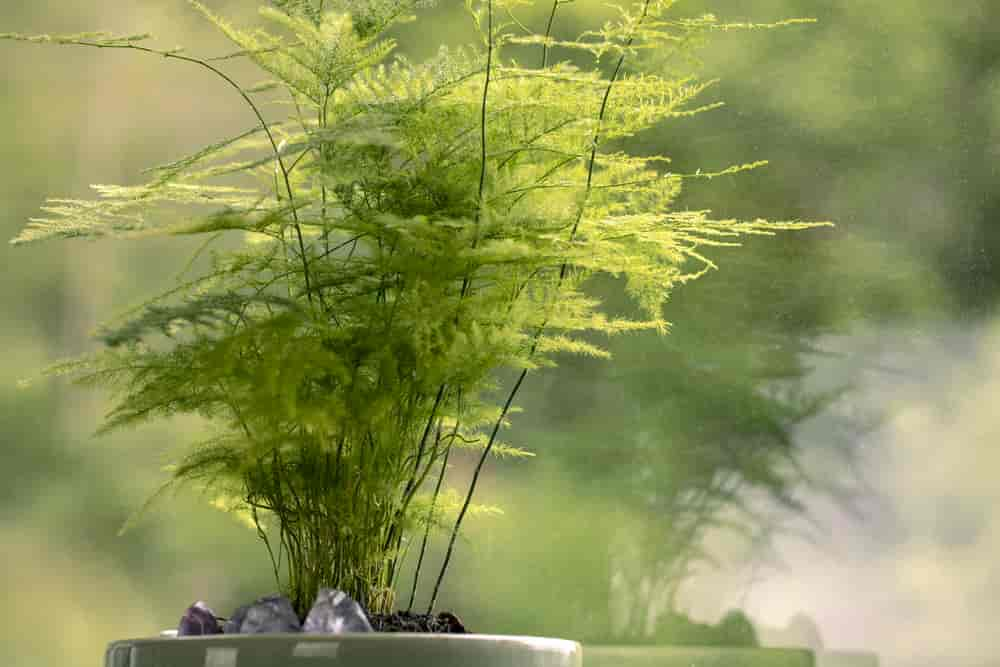It’s probably not surprising given what this website is about, but I truly love having plants around the house. Not only do they make my home look great, but they also have some great benefits, such as having a calming effect and regulating humidity.
Are you ready to start adding some of the most common houseplants to your home? After all, “common” doesn’t mean “boring” here – instead, there’s a reason so many people choose to bring them into their homes!
Here are some of the best low-maintenance indoor plants that will beautify your home without taking up too much of your time. Read on to find a fit that’s right for you!

Table of Contents
Most common houseplants to spruce up your home
1. Aloe vera

Aloe vera is a succulent plant that is often used to relieve burns and other skin irritations. It is also known to improve air quality by releasing oxygen into the atmosphere. This plant is easy to take care of because it doesn’t require a lot of water as long as it’s in a bright spot.
If your aloe vera plant is healthy, it will produce pups. You can take these pups and use them to start new plants. You can use these for gifting, trading, or just populating your home!
2. Spider plant

The spider plant, also known as the chlorophytum comosum, is a great low-maintenance indoor plant that looks cheery and vibrant. It is known to filter out toxins such as formaldehyde, benzene, and xylene from the air.
Hang this plant from a basket, place it on a bookshelf, or put it on top of a cabinet. The leaves will eventually cascade down, creating a beautiful waterfall effect. As long as it gets occasional water and indirect light, it will be happy.
Check the latest price of spider plants here.
3. Monstera deliciosa

These plants are taking houses by storm, and are the epitome of how common indoor plants can also be seen as very trendy (and reasonably priced – just check the most recent price of this Monstera deliciosa). The large, glossy leaves make a statement, and the plant can grow quite large if you let it. If you want a tropical element that grows up to 6 feet tall, this is the plant for you.
Monstera deliciosa does best in bright indirect sunlight but can also tolerate low light conditions. These plants like to be on the drier side and should only be watered about once a week or when the soil is dry. This plant can produce impressive edible fruits, but only under optimal conditions.
Learn all about how to care for Monstera here – from our ultimate Monstera guide!
4. Peace lily

The peace lily is a beautiful plant that can spruce up any home. It is known to be one of the best air-purifying plants and can remove toxins such as benzene, formaldehyde, and trichloroethylene from the air.
This plant thrives in shady areas and should be watered about once a week. The leaves will tell you when they need water, as they will start to droop when the plant is thirsty. During the spring months, your peace lily will produce tall beautiful white flowers.
Get your very own peace lily here.
5. Fiddle leaf fig

The fiddle leaf fig, or ficus lyrata, has been taking the houseplant world by storm in recent years. Its large glossy leaves are a show stopper in any room and as one of the more common household plants at the moment, you can’t go wrong with adding this to your home (check the latest price here).
It’s best if you have a spot for your fiddle leaf fig where it can get at least a few hours of direct sunlight each day. You should also keep an eye on how often you’re watering this plant, as it doesn’t like overwatering.
Find out everything there is to know about fiddle leaf fig care here.
6. Lucky bamboo

Lucky bamboo is a popular plant that is known to bring good luck and fortune. It is also believed to purify the air and remove toxins. It grows quickly and can be easily propagated by cuttings. It’s one of the most common indoor plants because it’s fool-proof to take care of.
Lucky bamboo can be grown in water or soil. If you choose to grow it in water, make sure to change the water every week to keep it fresh. You can also add some stones or marbles to the pot to give it a more decorative look.
To really spruce up your home, grab the braided lucky bamboo plant from the image above here.
7. Pothos

There are so many different varieties of pothos, each with gorgeously unique markings on their leaves, that picking any type of this plant is going to be a great decision for your home (although I’m a particular fan of the golden pothos, which you can check the price of here).
While pothos can stand on their own, they also look beautiful draped from a hanging basket or on a shelf. Fortunately, they’re also very easy to look after. Just remember to occasionally water your pothos, make sure it’s only getting some indirect light and this beautiful but very common houseplant will thrive.
Check out our full guide on pothos care here.
8. Bromeliad plant

Bromeliad plants have a unique beauty about them that makes them one of the most popular houseplants for stylish indoor arrangements. They come in a wide variety of colors (you can get the one above with the bright red flower here, for example) and can brighten up any room.
Bromeliad plants need bright, indirect light and should be watered about once a week. The soil should be allowed to dry out in between watering. These plants are also easy to propagate by taking offsets or pups from the mother plant.
9. Mass cane plant

This plant is tall, reaching up to six feet, and has long, green leaves that are bright and tropical looking. This plant prefers indirect sunlight, weekly waterings, and a humid environment. Consider misting the leaves of your mass cane plant to help increase the humidity.
The mass cane plant is a great choice if you want a larger tree-like houseplant in the home. It can grow quite substantially in a few short years and become a real showstopper in any room.
Get your own mass cane plant here.
10. Jade plant

The jade plant is a common houseplant that’s actually a succulent as part of the Crassula family. This plant is one of the most popular succulents because it is easy to take care of and has a beautiful appearance.
Jade plants need bright, indirect light and should be watered about once a week. The soil should be quick draining so that there isn’t any risk of root rot or overwatering. If well cared for, your jade plant can live for many years and even become a family heirloom.
Check the latest price on jade plants here.
11. String of pearls plant

The string of pearls plant, known as senecio rowleyanus, is a beautiful succulent that has small, pearl-like leaves. It is easy to take care of and does well in bright, indirect light. People love the unique appearance of this plant and how it can add a touch of elegance to any room.
String of pearls plants need well-draining soil and should be watered about once a week. There are plenty of creative ways you can display this beautiful yet very common houseplant, including in a hanging basket or on a trellis.
Add the string of pearls to your plant collection here.
12. English ivy

English ivy was first introduced to North America in the early 1600s. It was used as an ornamental plant in gardens and homes. It’s now a common houseplant that is easily trained to grow on a trellis, wall, or other support. It also grows well in a basket.
English ivy prefers indirect light but can tolerate low light conditions. It should be watered about once a week and the soil allowed to dry out in between watering. This plant is also known for being a good air purifier and is a great choice for bathrooms and kitchens.
Find the latest price on English ivy here.
13. Dracaena plant

These larger plants look like small trees when they’re fully grown and can add a touch of the tropics to any room. As one of the more unique-looking options on any list of common household plants, they come in a wide variety of striped colors, including green, red, yellow, and purple. For instance, you can check the latest price here on the lemon and lime version from the picture above.
Dracaena plants need bright, indirect light and should be watered about once a week. As long as they are planted in a large pot with well-draining soil, there shouldn’t be any other maintenance needed for them.
14. Chinese evergreen

The Chinese evergreen plant, known as aglaonema, is a great option for beginner houseplant owners or those with brown thumbs. It’s incredibly resilient and can survive in almost any room in your home. This isn’t to say that it could indefinitely live with no light, but it can survive in very dim conditions.
This slow-growing plant starts small and is adaptable to all sorts of areas in the home including bathrooms, bedrooms, and kitchens. That said, not only is it a common house plant, but it also makes an attractive addition to any office space as well and can help improve the air quality.
Get your own Chinese evergreen plant here.
15. Ficus plant

The ficus plant is also known as a weeping fig, which is related to fig fruit trees as well as rubber trees. They make great bonsai trees or larger tree-like plants in the home and have both dark green and variegated leaves.
These plants like indirect light, warm temperatures, and high humidity. These are best for those who like a tropical feel indoors and don’t mind a little extra moisture in the air.
Add a ficus to your home (or office!) here.
16. Hoya plant

While hoya plants have bright waxy leaves, they’re most well-known for their beautiful blooms. While blooming can be a challenge for plant owners, it’s pretty easy to take care of a hoya plant in between bloom cycles.
Hoya plants are typical houseplants in that they like bright, indirect light and should be watered about once a week when the soil is dry to the touch. You can leave this plant in its pot for quite some time since it likes to be root bound and this increases the likeliness of blooms.
Check the latest price here of the variegated hoya in the picture above.
17. African violet

The unique thing about African violets is that they’re one of the few blooming houseplants that also do well in low light conditions. These plants have beautiful blooms in shades of purple, blue, white, and pink.
African violets also have a texture that sets them apart from other houseplants. Their leaves are fuzzy and soft, which can be a fun addition to any room. These plants need well-drained soil and should be watered about once a week.
Add some color with some African violets here.
18. Air plants

Air plants are great yet increasingly common houseplants because they don’t require any soil to grow. They get their nutrients from the air, which means they can be placed almost anywhere in your home. They also only need to be watered (usually misted with a spray bottle) about once a week.
Air plants come in a variety of shapes and sizes, so there’s sure to be one that fits your home perfectly. These work great in bathrooms where they can take in the humidity or in any room that has a lot of ambient humidity, so you don’t have to water them.
And just take a look at the colors in the one in the image above! You can get that exact one here, by the way.
19. Elephant’s ear

You may have seen this bold big-leafed plant outdoors, and it makes a fantastic house plant as well. They will occasionally flower, shooting up a delicate creamy bloom. If you want a plant with contrast, the light-colored veins running up the dark leaves (like the one in the picture above – which you can grab here) will make this plant pop in your home.
This plant is happy in humid conditions, such as the kitchen or bathroom. It likes bright light but can’t handle direct sunlight without getting scorched, especially in the high summer season.
20. Asparagus fern

This fun and fuzzy fern is a great addition to any home. It has long, thin leaves that are similar in shape to asparagus spears. The plant can grow quite large if left unchecked and can even produce small white flowers.
Asparagus ferns like bright indirect sunlight but can also tolerate low light conditions and some shade. Make sure your fern has well-drained soil and water it when the soil is dry to the touch. These plants are also quite tolerant of different humidity levels, making them a versatile plant for any home.
See the most recent price of asparagus ferns here.
21. Lemon button fern

While ferns have been considered as being typical house plants for some time now, the lemon button fern offers a nice twist on the more standard “fern look” you may have seen around some homes.
That is, it’s a small, delicate-looking fern that has bright green leaves with white undersides. The leaves are thin and pointed, and the plant produces small white flowers.
Lemon button fern is a good houseplant because it is tolerant of different humidity levels, bright indirect light, and low light conditions. It also has a long lifespan and can be easily propagated and shared with friends and family – although, as you can see from the current price here, they’re also very reasonable to buy outright yourself.
22. Inch plant

The inch plant (also called the Wandering Jew or spiderwort) is a small, common houseplant that has dark green leaves with white undersides. It produces small white flowers and grows slowly over time. It looks great in hanging baskets or cascading down shelves or cabinets.
You can choose from different sizes and colors to find the perfect match for your home (for example, you can see the latest price of a beautiful dark purple version here). Feel free to keep it in a low-light room, but make sure to occasionally take it out to drink up some bright sun in another area of your home. These plants like to be watered about once a week and like their soil to be slightly moist at all times.
23. Moss

You probably know of moss as a type of plant that is usually found in wet environments. And while this is true (making it perhaps a more common household plant outside the home when it’s not intentionally grown!),, it’s really having a moment, with moss bowls like the one above being super on trend at the moment (you can get some moss here to add to a bowl to make your own).
It has small, green leaves and can be used to decorate pots, terrariums, ornaments, and other items. Moss can also be used to cover the ground in shady areas.
There are several varieties of moss, and each has different watering requirements. Some mosses like to be kept moist, while others prefer to be allowed to dry out between waterings. Moss also prefers shady areas but can tolerate some sun.
24. Orchid

The orchid is a beautiful flower that has a unique appearance – just at the pink and yellow striped effect on each petal in the picture above (and by the way, you can check the latest price of that exact orchid above here). It is often seen as a symbol of love and luxury, and it is one of the most popular flowers in the world. This has led to it easily becoming one of the more common house plants around, especially for anyone wanting the occasional flower added to their decor.
Orchids come in a variety of colors, and each flower has unique markings. They can be found in both indoor and outdoor settings, and they make a great addition to any home.
Orchids prefer bright, indirect light and should be watered about once a week. The soil should be allowed to dry out between waterings, and the plant should be fertilized every other month. Orchids are also sensitive to changes in temperature, so make sure to keep them away from drafts or heaters.
